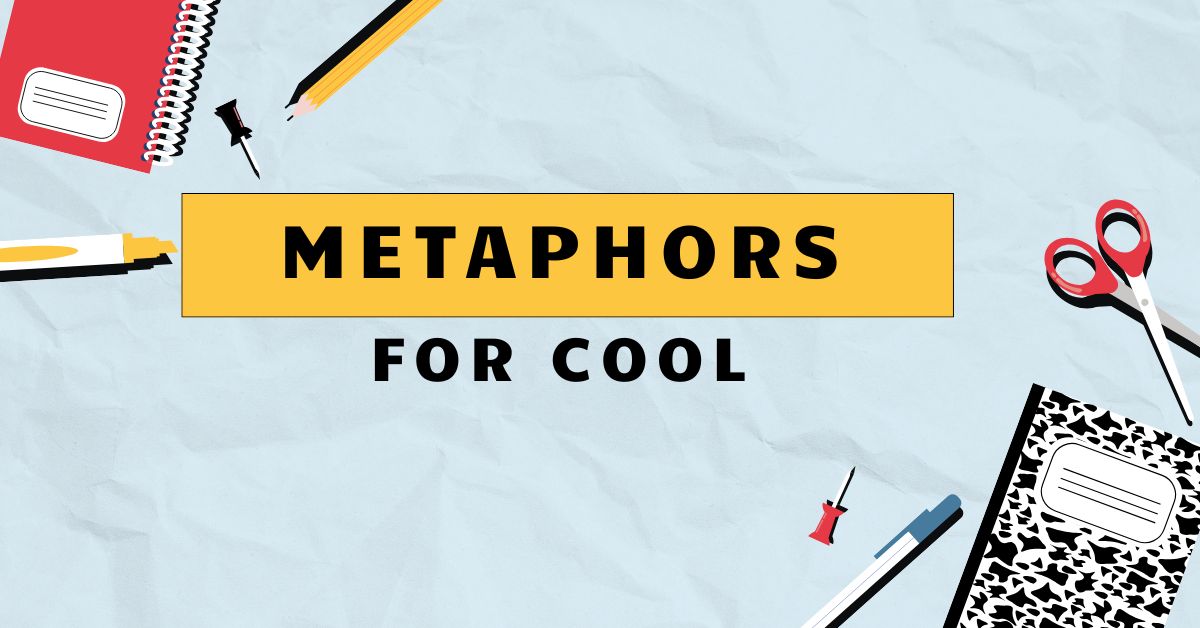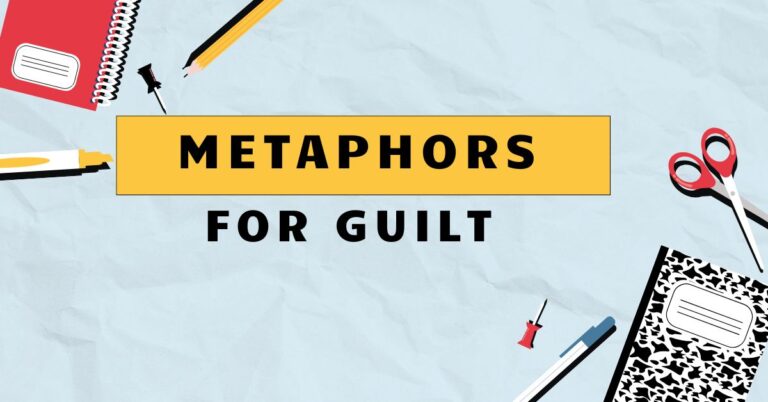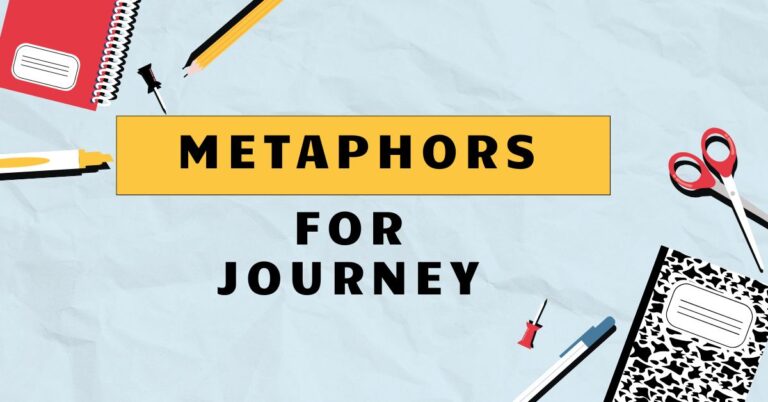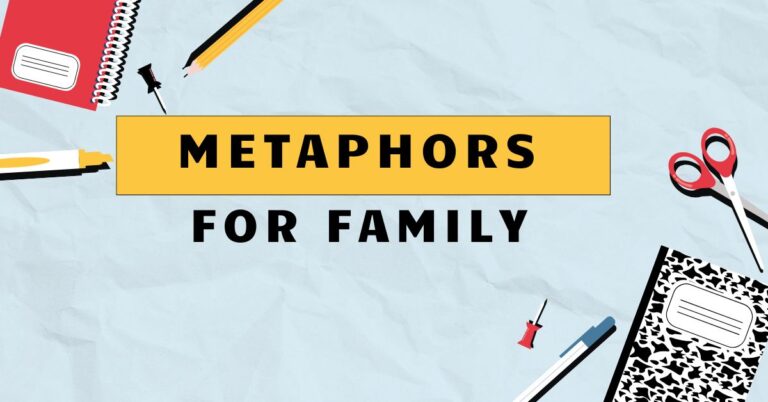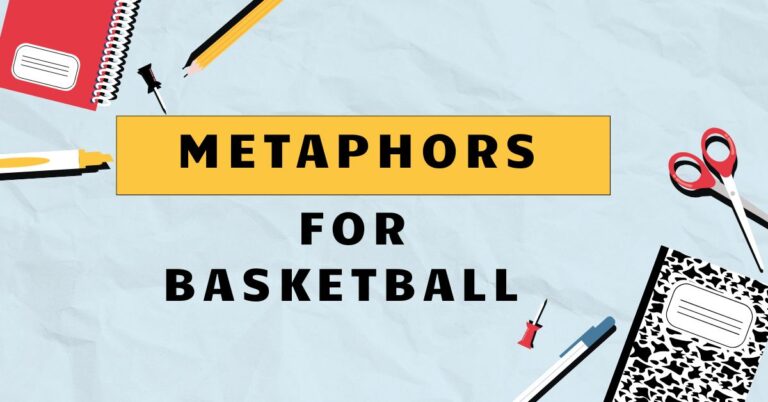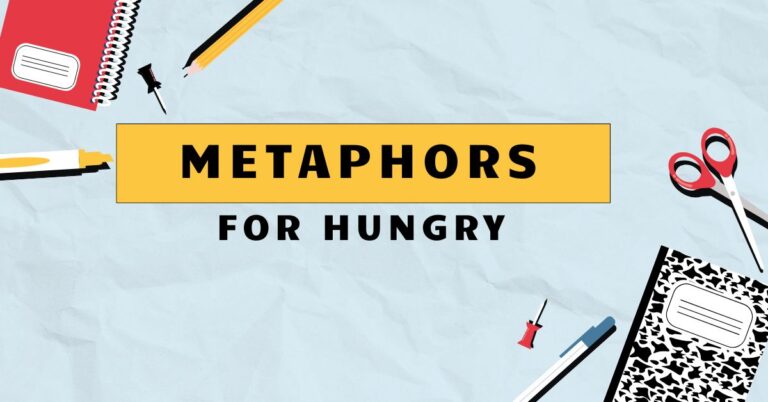47 Metaphors for Cool: Exploring Figurative Language
Understanding metaphors is crucial for mastering English, as they enrich communication by adding layers of meaning and emotional depth. This article delves into the diverse metaphors used to describe “cool,” a concept that varies across cultures and contexts.
By exploring these metaphors, learners will enhance their comprehension skills, expand their vocabulary, and gain a deeper appreciation for the nuances of the English language. This guide is perfect for English language learners, students of literature, and anyone seeking to express themselves more creatively and effectively.
Table of Contents
- Introduction
- Definition of Metaphor for “Cool”
- Structural Breakdown of Metaphors
- Types and Categories of “Cool” Metaphors
- Examples of Metaphors for “Cool”
- Usage Rules for Metaphors
- Common Mistakes When Using Metaphors
- Practice Exercises
- Advanced Topics in Metaphor Usage
- Frequently Asked Questions
- Conclusion
Definition of Metaphor for “Cool”
A metaphor is a figure of speech that directly compares two unrelated things, suggesting a likeness between them without using “like” or “as.” When applied to the concept of “cool,” metaphors transfer qualities from concrete or abstract entities to describe someone or something as impressive, stylish, or admirable. The term “cool” itself has evolved metaphorically from its literal meaning of low temperature to signify a desirable state of being.
Understanding the subtle nuances of these metaphors is essential for interpreting and using the English language effectively.
The function of a metaphor for “cool” is to add depth and nuance to descriptions, making them more vivid and engaging. Instead of simply stating that someone is “cool,” a metaphor can evoke a specific feeling or image, allowing for a more impactful and memorable expression.
This figurative usage of “cool” is pervasive in various contexts, including everyday conversations, literature, music, and advertising. The metaphorical “cool” can be applied to people, objects, ideas, or even entire situations, showcasing its versatility and adaptability within the English language.
Structural Breakdown of Metaphors
Metaphors consist of two main elements: thetenorand thevehicle. The tenor is the subject being described (in this case, “cool”), while the vehicle is the object or concept used to convey the meaning.
The connection between the tenor and the vehicle is not literal but rather based on shared characteristics or associations. For example, in the metaphor “He’s an ice king,” “he” is the tenor (the person being described as cool), and “ice king” is the vehicle, implying qualities like detachment, power, and control.
The effectiveness of a metaphor depends on the audience’s ability to recognize the connection between the tenor and the vehicle. A well-chosen metaphor resonates with the listener or reader, creating a vivid and memorable impression.
However, a poorly chosen metaphor can be confusing or ineffective if the connection is unclear or strained. Therefore, understanding the cultural and contextual associations of different vehicles is crucial for crafting impactful metaphors for “cool.” The structure of a metaphor is often implicit, meaning the comparison is not explicitly stated.
Instead, the listener or reader must infer the connection based on their understanding of the language and the context.
Types and Categories of “Cool” Metaphors
Metaphors for “cool” can be categorized based on the type of imagery or association they evoke. Here, we will explore several common categories.
Temperature Metaphors
These metaphors directly relate to the literal meaning of “cool,” associating the subject with low temperatures to imply a sense of calmness, control, or detachment. This is perhaps the most intuitive metaphorical extension of the word “cool” itself.
The underlying idea is that remaining calm and collected, like being unaffected by heat, is a desirable trait.
Emotional Metaphors
These metaphors link “cool” to emotional states, often implying a lack of strong emotion or a sense of composure under pressure. They suggest an ability to remain unruffled, a quality often admired and associated with strength and resilience.
These metaphors tap into the idea that emotional control is a sign of maturity and sophistication.
Social Status Metaphors
These metaphors associate “cool” with high social standing, influence, or exclusivity. They often involve imagery of royalty, celebrity, or other forms of elite status.
The underlying message is that being “cool” is synonymous with being admired, respected, and sought after by others. These metaphors reflect the social dynamics that often influence perceptions of coolness.
Attribute Metaphors
These metaphors describe “cool” by associating it with specific attributes or qualities, such as smoothness, sleekness, or effortless grace. They focus on the tangible characteristics that contribute to an overall sense of coolness.
These metaphors often appeal to aesthetic sensibilities, highlighting the visual and sensory aspects of coolness.
Sensory Metaphors
These metaphors use sensory imagery (sight, sound, touch, taste, smell) to convey the feeling of “cool.” They aim to create a visceral experience for the listener or reader, allowing them to connect with the concept of coolness on a deeper, more personal level. These metaphors often rely on evocative language and vivid descriptions to stimulate the senses.
Examples of Metaphors for “Cool”
The following section provides examples of metaphors for “cool,” categorized by the types discussed above. Each category provides several examples within tables to demonstrate a wide range of expression.
Temperature Examples
Temperature metaphors are highly effective because they directly play on the literal sense of the word “cool.” They can evoke a sense of ease or being unaffected.
| Metaphor | Explanation |
|---|---|
| He’s an ice cube under pressure. | Implies he remains calm and collected even in stressful situations. |
| She’s got ice in her veins. | Suggests she is emotionless or extremely controlled. |
| That performance was glacial. | Describes a performance that was effortlessly smooth and impressive. |
| He’s a cool breeze on a hot day. | Indicates someone who brings relief and calmness to a situation. |
| She’s as cool as the other side of the pillow. | Highlights her remarkable calmness and composure. |
| His demeanor was frosty. | Suggests a cold, detached, and unapproachable attitude. |
| The atmosphere was icy. | Conveys a sense of tension and discomfort. |
| He gave her an arctic stare. | Describes a cold, piercing look. |
| She handled the situation with glacial precision. | Highlights her meticulous and unhurried approach. |
| His words were like a cold shower. | Suggests a harsh, sobering statement. |
| The project was put on ice. | Implies the project was suspended or delayed. |
| He keeps a cool head in a crisis. | Shows his ability to remain calm during emergencies. |
| She’s a winter’s night: beautiful and cold. | Combines beauty with a sense of emotional distance. |
| His smile was as chilling as frost. | Indicates a smile that is unsettling and cold. |
| The music had a frosty edge. | Suggests a cool, detached quality in the music. |
| She’s a cool drink of water in the desert. | Indicates someone who is refreshing and welcome in a difficult situation. |
| He maintained an icy silence. | Describes a cold, deliberate silence. |
| The news hit him like a blast of cold air. | Suggests the news was shocking and unwelcome. |
| His advice was as refreshing as a winter breeze. | Highlights how invigorating and helpful his advice was. |
| She’s a cool customer. | Describes someone who is calm and self-possessed. |
| The room was as cold as a morgue. | Conveys a sense of deathly chill and discomfort. |
| He’s got a heart of ice. | Implies he is unfeeling and emotionless. |
| She gave him the cold shoulder. | Indicates she is ignoring or snubbing him. |
Emotional Examples
Emotional metaphors play on the association of “cool” with being calm, collected, and unemotional. They often reflect a controlled demeanor.
| Metaphor | Explanation |
|---|---|
| He’s a zen master in disguise. | Implies he is incredibly calm and composed. |
| She’s an unreadable book. | Suggests she is enigmatic and her emotions are hidden. |
| He’s a stone statue. | Indicates someone who shows no emotion. |
| She’s an island of tranquility. | Highlights her ability to remain calm amidst chaos. |
| He’s a fortress of calm. | Suggests he is impenetrable to emotional stress. |
| She’s a master of emotional poker. | Implies she is skilled at hiding her true feelings. |
| He’s a blank canvas. | Indicates someone who shows little expression. |
| She’s a serene lake. | Conveys a sense of peacefulness and composure. |
| He’s a stoic philosopher. | Highlights his ability to endure hardship without showing emotion. |
| She’s a calm sea in a storm. | Suggests she remains calm even in turbulent times. |
| He’s a robot programmed for coolness. | Implies he is unemotional and detached. |
| She’s a picture of composure. | Indicates someone who is perfectly calm and collected. |
| He’s a rock in a raging river. | Suggests he is steadfast and unyielding. |
| She’s an oasis of calm. | Highlights her ability to provide tranquility in a stressful environment. |
| He’s a monk meditating in a storm. | Implies he is deeply calm and undisturbed. |
| She’s a sphinx with a secret. | Suggests she is enigmatic and inscrutable. |
| He’s a poker face champion. | Indicates someone who is skilled at hiding their emotions. |
| She’s a wall of indifference. | Conveys a sense of emotional detachment. |
| He’s a fortress of serenity. | Suggests he is emotionally impenetrable. |
| She’s a calm observer. | Highlights her ability to remain detached and analytical. |
| He’s a cool cucumber. | Indicates someone who is remarkably calm and unflappable. |
| She’s a serene swan gliding on water. | Conveys an image of graceful and effortless composure. |
| He’s an emotionless android. | Suggests a lack of human feelings or reactions. |
Social Status Examples
Social status metaphors relate coolness to power, influence, and exclusivity. They often involve imagery of royalty or celebrity.
| Metaphor | Explanation |
|---|---|
| He’s the king of the scene. | Implies he is the most influential person in a particular social group. |
| She’s a celebrity magnet. | Suggests she attracts attention and admiration from famous people. |
| He’s a trendsetter. | Indicates someone who starts new fashions or styles. |
| She’s a queen bee. | Highlights her position as the most popular or influential woman in a group. |
| He’s a VIP everywhere he goes. | Suggests he is treated with special privileges and attention. |
| She’s a social butterfly. | Implies she is popular and well-connected. |
| He’s a star in his own right. | Indicates someone who is famous or admired. |
| She’s a socialite darling. | Highlights her popularity and prominence in social circles. |
| He’s the gatekeeper of cool. | Suggests he controls who is considered cool or not. |
| She’s a tastemaker. | Implies she has the power to influence trends and preferences. |
| He’s a social icon. | Indicates someone who is widely recognized and admired. |
| She’s a reigning monarch of style. | Highlights her dominance and influence in fashion. |
| He’s a social media guru. | Suggests he is highly influential on social media platforms. |
| She’s a red carpet regular. | Implies she is frequently seen at high-profile events. |
| He’s a cultural influencer. | Indicates someone who shapes popular culture. |
| She’s a social trendsetter. | Highlights her ability to start new trends and styles. |
| He’s a social magnet. | Indicates someone who naturally attracts people and attention. |
| She’s a VIP in the fashion world. | Suggests she enjoys special privileges and recognition in the fashion industry. |
| He’s a social elite. | Implies he belongs to a privileged and influential social group. |
| She’s the first lady of fashion. | Highlights her elegance, influence, and leadership in the fashion community. |
| He’s a social butterfly. | Indicates someone who is sociable and popular at various events. |
| She’s the queen of the social scene. | Suggests she holds a prominent and influential position in social circles. |
| He’s a social trendsetter. | Implies he is at the forefront of new social movements and behaviors. |
Attribute Examples
Attribute metaphors focus on the qualities that define “cool,” such as smoothness, sleekness, or effortless grace.
| Metaphor | Explanation |
|---|---|
| He’s a smooth operator. | Implies he is skilled at handling difficult situations with ease. |
| She’s a velvet voice. | Suggests her voice is smooth, soothing, and captivating. |
| He’s a silent assassin. | Indicates someone who is effective and efficient without drawing attention. |
| She’s a graceful dancer. | Highlights her elegance and fluidity in movement. |
| He’s a master of understatement. | Suggests he is skilled at conveying meaning with subtlety. |
| She’s a sleek machine. | Implies she is efficient, well-organized, and effective. |
| He’s a minimalist masterpiece. | Indicates someone who embodies simplicity and elegance. |
| She’s an effortless beauty. | Highlights her natural attractiveness and charm. |
| He’s a man of few words. | Suggests he is reserved and thoughtful in his communication. |
| She’s a vision of elegance. | Implies she is stylish and refined. |
| He’s a silent observer. | Indicates someone who is discreet and perceptive. |
| She’s a study in contrasts. | Highlights her complexity and intriguing nature. |
| He’s a master of disguise. | Suggests he is skilled at blending in and adapting to different situations. |
| She’s a walking paradox. | Implies she is full of contradictions and unexpected qualities. |
| He’s a silent predator. | Indicates someone who is stealthy and effective in achieving his goals. |
| She’s a symphony of style. | Highlights her harmonious and elegant fashion sense. |
| He’s a smooth talker. | Indicates someone who is skilled at persuasion through charming conversation. |
| She’s a silent force. | Suggests her influence and impact are significant but understated. |
| He’s a velvet hammer. | Implies he is gentle in appearance but forceful in action. |
| She’s a whisper of elegance. | Highlights her subtle and sophisticated style. |
| He’s a master of subtlety. | Indicates someone who excels at understated communication and actions. |
| She’s a seamless blend of grace and power. | Suggests she combines elegance with strength and influence. |
| He’s a silent achiever. | Implies he achieves success without needing to boast or draw attention. |
Sensory Examples
Sensory metaphors evoke the feeling of “cool” through vivid descriptions that appeal to the senses.
| Metaphor | Explanation |
|---|---|
| His voice was smooth as silk. | Suggests his voice is pleasing and soothing to the ear. |
| Her style was a visual symphony. | Highlights her harmonious and captivating fashion sense. |
| He moved like a shadow. | Implies he is stealthy and discreet in his movements. |
| Her presence was a refreshing breeze. | Highlights her ability to invigorate and uplift the atmosphere. |
| He had the scent of mystery. | Suggests he is intriguing and enigmatic. |
| Her laughter was a melodious chime. | Implies her laughter is pleasant and musical. |
| He dressed in muted tones of coolness. | Indicates his clothes conveyed a sense of understated style. |
| Her aura was a warm glow. | Highlights her inviting and comforting presence. |
| He spoke with the resonance of a deep ocean. | Suggests his words carried depth and weight. |
| Her touch was as light as a feather. | Implies her touch is gentle and delicate. |
| His style was a visual feast. | Suggests his appearance is captivating and aesthetically pleasing. |
| Her voice was a velvet caress. | Implies her voice is soothing and gentle. |
| He moved with the fluidity of water. | Suggests his movements are graceful and seamless. |
| Her smile was a sparkling light. | Highlights her radiant and joyful expression. |
| He carried the scent of old books and leather. | Implies he is intellectual and refined. |
| Her laughter was like wind chimes in the breeze. | Suggests her laughter is light, airy, and musical. |
| He had a gaze that could pierce through steel. | Suggests his stare is intense and penetrating. |
| Her presence was a breath of fresh air. | Highlights her ability to invigorate and refresh a situation. |
| He spoke with the smoothness of aged whiskey. | Suggests his words are refined and sophisticated. |
Usage Rules for Metaphors
Using metaphors effectively requires understanding certain guidelines.Clarityis paramount; the connection between the tenor and vehicle should be readily apparent. Avoid mixed metaphors, where the comparison becomes illogical or confusing due to incompatible imagery.
For example, avoid saying “He’s a cool cucumber riding the wave of success,” as it combines two unrelated images.Consistencyin tone and style is also important. Ensure the metaphor aligns with the overall message and context.
Overuse of metaphors can dilute their impact, so use them judiciously to emphasize key points and add depth to your writing or speech. Finally, always consider your audience.
A metaphor that resonates with one group may be lost on another due to cultural or contextual differences. Adapt your language accordingly to ensure your message is clear and impactful.
When using metaphors, it’s essential to consider the cultural connotations associated with the vehicle. Some images may carry different meanings in different cultures, so it’s important to be aware of these nuances to avoid unintended interpretations.Originalitycan make your metaphors more impactful, but avoid being so obscure that the connection becomes unclear.
A well-crafted metaphor should strike a balance between novelty and familiarity.Contextis also crucial. The meaning of a metaphor can change depending on the surrounding words and sentences.
Always consider the overall context when interpreting or using metaphors to ensure they are understood as intended.
Common Mistakes When Using Metaphors
One common mistake is usingclichéd metaphors, which are overused and lack originality. For instance, saying “He’s as cool as a cucumber” is a common, but less impactful choice.
Strive for fresh and imaginative comparisons. Another mistake is usingmixed metaphors, where the imagery becomes inconsistent and confusing.
For example, saying “She’s a rising star who’s also a grounded tree” combines contradictory images. Ensure your metaphors are logical and coherent.
Also, be wary ofoverextendinga metaphor. Trying to draw too many comparisons between the tenor and the vehicle can make the metaphor strained and unnatural.
Incorrect Example: “He’s a cool cat who’s also a fish out of water.” (Mixed metaphor)
Correct Example: “He’s a cool cat who always lands on his feet.”
Incorrect Example: “She’s a rising star, and her light is a guiding ship in the dark sea of despair, navigating the treacherous waves of adversity.” (Overextended metaphor)
Correct Example: “She’s a rising star, guiding others with her light.”
Incorrect Example: “He’s as cool as ice.” (Clichéd metaphor)
Correct Example: “He’s an arctic explorer, unfazed by the harshest conditions.”
Practice Exercises
Test your understanding of metaphors for “cool” with the following exercises.
Exercise 1: Identifying Metaphors
Identify the metaphor in each sentence and explain what it means.
| Question | Answer |
|---|---|
| 1. He’s a rock in a hurricane. | Metaphor: “rock in a hurricane.” Meaning: He is steadfast and unyielding amidst chaos. |
| 2. She’s a queen on her throne. | Metaphor: “queen on her throne.” Meaning: She has a high social status and influence. |
| 3. His words were a velvet hammer. | Metaphor: “velvet hammer.” Meaning: His words are gentle in appearance but forceful in impact. |
| 4. She’s an iceberg in a bikini. | Metaphor: “iceberg in a bikini.” Meaning: She is seemingly attractive but emotionally cold. |
| 5. He’s a silent movie star. | Metaphor: “silent movie star.” Meaning: He is charismatic and expressive without saying much. |
| 6. She’s a cool stream on a summer day. | Metaphor: “cool stream on a summer day.” Meaning: She is refreshing and calming. |
| 7. He’s a poker-faced robot. | Metaphor: “poker-faced robot.” Meaning: He shows no emotion or expression. |
| 8. She’s a walking paradox. | Metaphor: “walking paradox.” Meaning: She is full of contradictions and unexpected qualities. |
| 9. He’s a smooth talker. | Metaphor: “smooth talker.” Meaning: He is skilled at persuasion through charming conversation. |
| 10. She’s a fortress of serenity. | Metaphor: “fortress of serenity.” Meaning: She is emotionally impenetrable and calm. |
Exercise 2: Creating Metaphors
Create a metaphor for “cool” based on the given prompt.
| Prompt | Answer |
|---|---|
| 1. Describe a cool musician. | He’s a jazz riff, effortlessly smooth and improvisational. |
| 2. Describe a cool athlete. | She’s a cheetah on the track, sleek, fast, and unstoppable. |
| 3. Describe a cool leader. | He’s a compass guiding his team through uncharted waters. |
| 4. Describe a cool artist. | She’s a vibrant canvas, full of unexpected colors and textures. |
| 5. Describe a cool scientist. | He’s a cosmic explorer, charting new territories of knowledge. |
| 6. Describe a cool writer. | She’s a weaver of words, crafting intricate and captivating stories. |
| 7. Describe a cool dancer. | He’s a flowing river, graceful and dynamic in his movements. |
| 8. Describe a cool actor. | She’s a chameleon, seamlessly transforming into any character. |
| 9. Describe a cool chef. | He’s an alchemist, transforming simple ingredients into culinary masterpieces. |
| 10. Describe a cool entrepreneur. | She’s a visionary, building empires from innovative ideas. |
Exercise 3: Analyzing Metaphors
Analyze the following metaphors for “cool,” explaining the tenor, vehicle, and the connection between them.
| Metaphor | Analysis |
|---|---|
| 1. He’s an iceberg in the tropics. | Tenor: A person. Vehicle: Iceberg in the tropics. Connection: He is out of place, cold, and detached. |
| 2. She’s a zen garden of style. | Tenor: A person’s style. Vehicle: Zen garden. Connection: Her style is minimalist, harmonious, and calming. |
| 3. His confidence is a steel shield. | Tenor: Confidence. Vehicle: Steel shield. Connection: His confidence is strong, protective, and impenetrable. |
| 4. She’s a velvet revolution in fashion. | Tenor: A person’s fashion. Vehicle: Velvet revolution. Connection: Her fashion is transformative, elegant, and impactful. |
| 5. He’s a silent storm brewing. | Tenor: A person. Vehicle: Silent storm. Connection: He appears calm but has intense emotions or potential. |
| 6. She’s a cool drink in the desert of life. | Tenor: A person. Vehicle: Cool drink in the desert. Connection: She is refreshing, necessary, and life-giving. |
| 7. He’s a smooth stone skipping across water. | Tenor: A person. Vehicle: Smooth stone skipping across water. Connection: He moves through life with ease and grace. |
| 8. She’s a lighthouse in the fog. | Tenor: A person. Vehicle: Lighthouse in the fog. Connection: She provides guidance and clarity in confusing situations. |
| 9. He’s a jazz solo, unpredictable and captivating. | Tenor: A person. Vehicle: Jazz solo. Connection: He is spontaneous, creative, and engaging. |
| 10. She’s a timeless classic. | Tenor: A person. Vehicle: Timeless classic. Connection: She is enduring, elegant, and always in style. |
Advanced Topics in Metaphor Usage
For advanced learners, exploring sustained metaphors and extended allegories can provide deeper insights into metaphor usage. Asustained metaphoris a metaphor that is developed over several lines or paragraphs, allowing for a more complex and nuanced comparison.
Anextended allegoryis a narrative that uses a series of interconnected metaphors to convey a deeper moral or political message. Analyzing literary works that employ these techniques can significantly enhance your understanding of figurative language.
Consider exploring the works of authors like Shakespeare, Emily Dickinson, and George Orwell, who masterfully use metaphors to enrich their writing. Practice incorporating sustained metaphors into your own writing to add depth and complexity to your expression.
Experiment with creating allegorical narratives to explore complex themes and ideas. Understanding the historical and cultural context of metaphors can also provide valuable insights into their meaning and impact.
Furthermore, exploring the cognitive science behind metaphors can provide a deeper understanding of how they work.Conceptual metaphor theory, developed by George Lakoff and Mark Johnson, suggests that metaphors are not just linguistic devices but fundamental aspects of human thought. This theory posits that we understand abstract concepts by mapping them onto more concrete experiences.
For example, the metaphor “ARGUMENT IS WAR” explains why we often use warlike language to describe arguments (e.g., “He attacked my points,” “I defended my position”). Understanding these underlying conceptual metaphors can help you create more resonant and impactful metaphors in your own communication.
Frequently Asked Questions
- What is the difference between a metaphor and a simile?
A metaphor directly compares two things without using “like” or “as,” while a simile uses “like” or “as” to make the comparison. For example, “He is a lion” is a metaphor, while “He is like a lion” is a simile. - How can I improve
your use of metaphors?
Read widely, pay attention to how metaphors are used in different contexts, and practice creating your own metaphors. Get feedback from others on your metaphors to see if they are clear and effective. - Are metaphors universal, or do they vary across cultures?
While some metaphors are universal, many metaphors are culturally specific. Understanding the cultural context of a metaphor is crucial for interpreting its meaning correctly. - Can metaphors be used in formal writing?
Yes, metaphors can be used in formal writing, but they should be used judiciously and appropriately. Ensure that your metaphors are clear, relevant, and consistent with the overall tone of your writing. - How do I avoid using clichéd metaphors?
Be creative and think outside the box. Try to come up with original comparisons that are fresh and imaginative. Read widely to expand your vocabulary and expose yourself to new ideas.
Conclusion
Metaphors for “cool” offer a rich and diverse way to express admiration, style, and composure. By understanding the different types of metaphors and practicing their usage, you can enhance your communication skills and add depth to your expression.
Remember to consider clarity, consistency, and context when using metaphors, and avoid common mistakes such as clichéd or mixed metaphors. With practice, you can master the art of using metaphors to convey the essence of “cool” in a vivid and memorable way.
Embrace the creativity and expressiveness that metaphors offer, and elevate your language skills to new heights.

